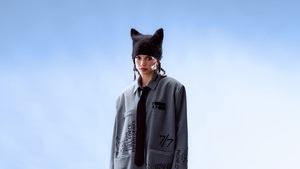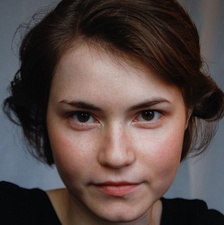Die Glasmenagerie
In the organizer's words:
With the drama "The Glass Menagerie," Tennessee Williams laid the foundation for his fame as one of the most important U.S. writers of the 20th century. Although the success of this production on Broadway was completely unexpected for the 33-year-old author, he had worked towards the premiere with great determination. Williams had the ambition to show a new form of theater with his drama. He wanted to make the essence of humanity tangible by telling the scenes as "memory play" from the perspective of personal memories.
TO BE READ BEFORE THE PERFORMANCE
From John Neumeier
When I was 17 years old, I experienced a play, "The Glass Menagerie," in a theater at the university I was soon to attend. I didn't realize then that the director, Father John Walsh, S. J., would become the most significant mentor of my life - nor did I suspect that Joan Schwartz, who played Laura, would one day be as familiar to me as a real sister.
The powerful impression of Tennessee Williams' drama remained unforgettable to me. Over the years, I kept thinking about how to turn it into a ballet, how to translate Tennessee Williams' extraordinarily moving poetry into meaningful movement. Ultimately, it was Alina Cojocaru and our joint work on the creation of "Liliom" that convinced me: now is the right time.
The biggest challenge in choreographically orchestrating this quartet of dramas is Laura. How can one choreograph a full-length ballet whose central character is handicapped? In the current rehearsal phase, the question is still at the forefront - although a particular dance language has emerged through the experience of creation.
The story is very simple. It is about a family. The conflicts, the aggressions and the love of a family sitting around the kitchen table. A mother, Amanda, who is abandoned, her artistic son Tom, who has to work in a shoe factory, and her fragile, dreamy daughter Laura Rose, who loves small glass animals - especially a unicorn. The concerns of these three people are increasingly directed toward a savior of sorts - the "gentleman caller" (suitor) - Jim O'Connor.
The confined space of their St. Louis apartment seems barely able to accommodate the intensity of each character's hopes, longings, and dreams. These hopes, longings, and dreams - rarely noted in concrete terms, but rather found between the lines of Tennessee Williams' brilliant dramatic poetry - form the (wordless) inspiration for my choreography.
Tennessee Williams calls his autobiographical drama a "play of memories." All the action and emotions are memories from Tom/Tennessee's past. In my "ballet of memories", drama and biography, past and present are simultaneously present and interact.
Music: Charles Ives, Philip Glass, Ned Rorem and fragments of music mentioned in Tennessee Williams' plays.
Choreography, stage design, lighting and costumes: John Neumeier
Films: Kiran West
2 hours 30 minutes | 1 intermission
1st part: 80 minutes, 2nd part: 45 minutes
WORLD PREMIERE:
Hamburg Ballet, Hamburg, December 1, 2019.
ORIGINAL CAST:
Laura Rose Wingfield: Alina Cojocaru
Amanda Wingfield: Patricia Friza
Tom Wingfield: Félix Paquet
Jim O'Connor: Christopher Evans
Tennessee: Edvin Revazov
The Unicorn: David Rodriguez
Malvolio: Marc Jubete
GUEST GAME:
2023 Chicago













